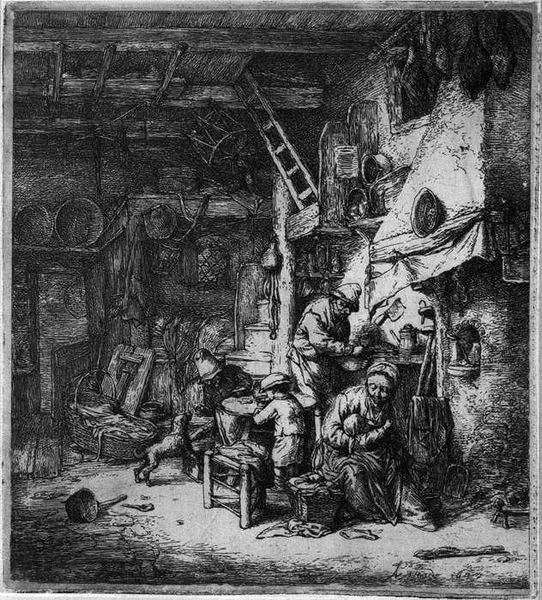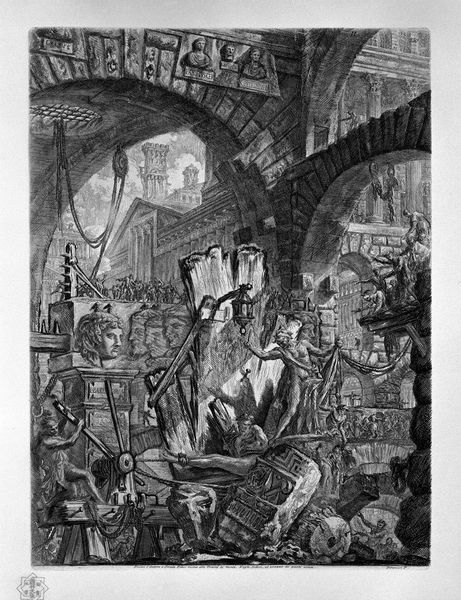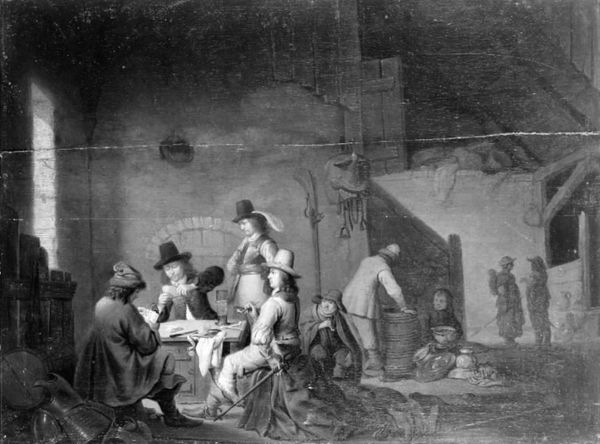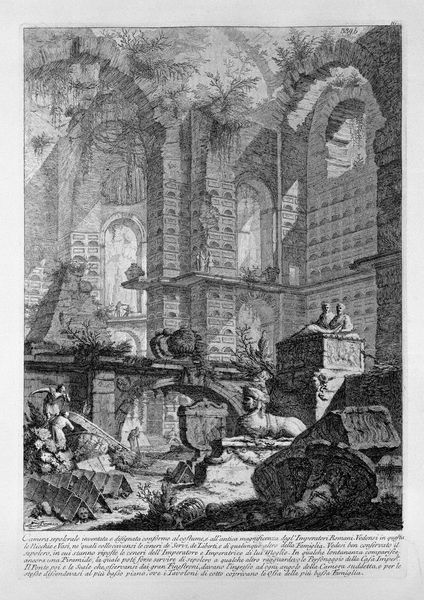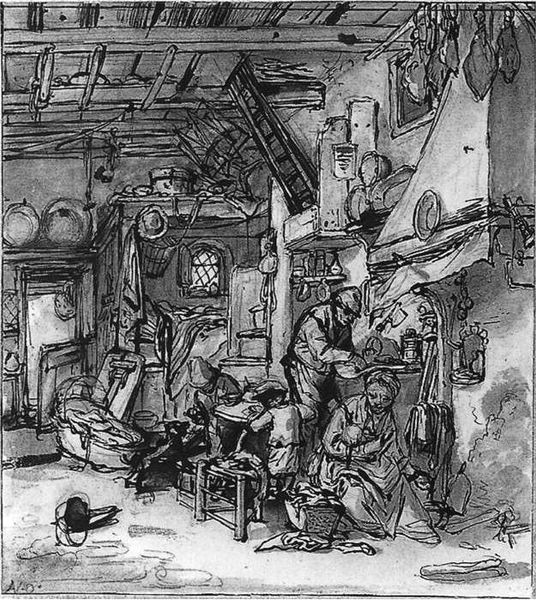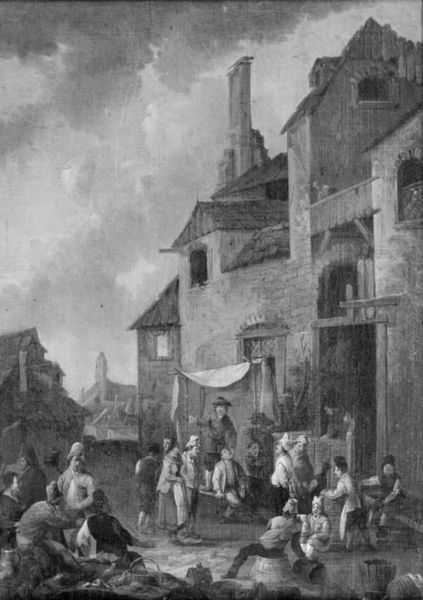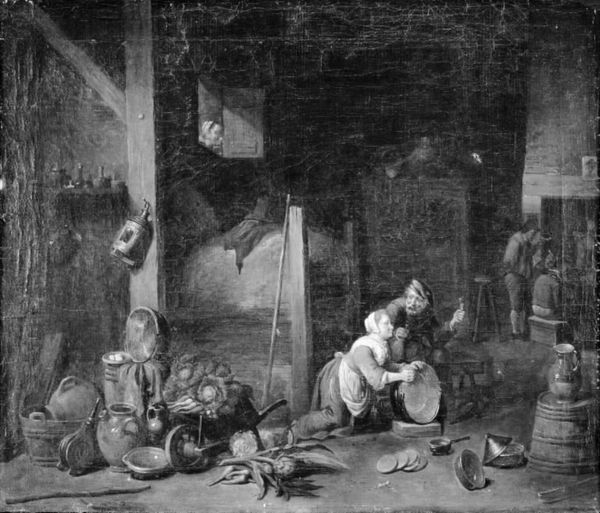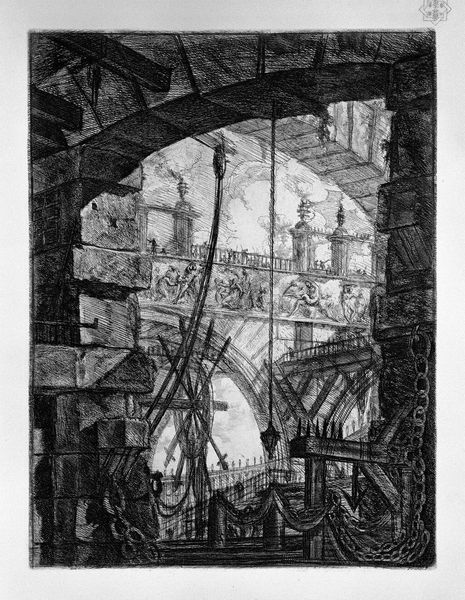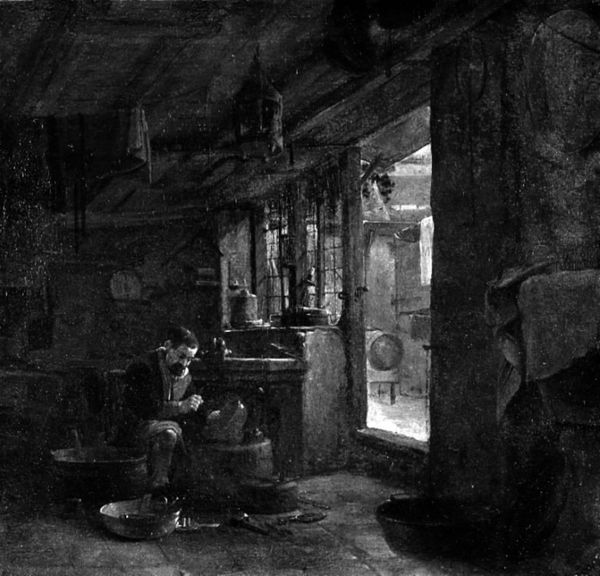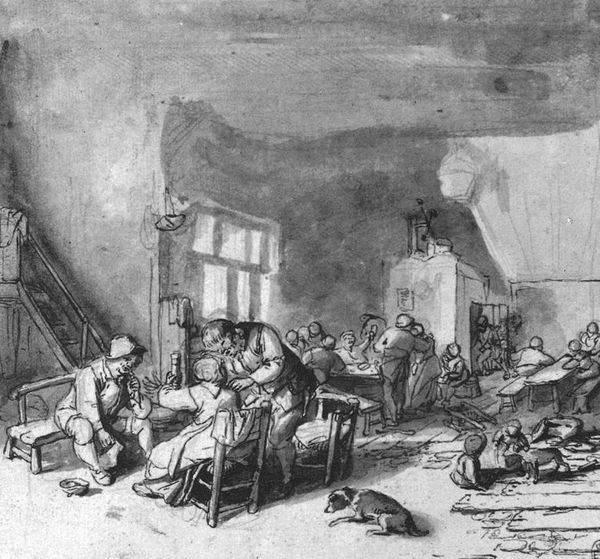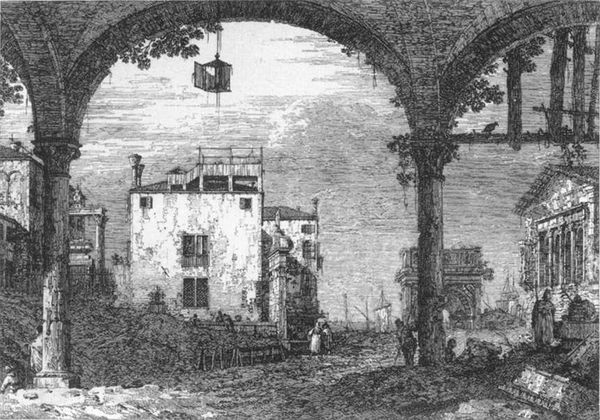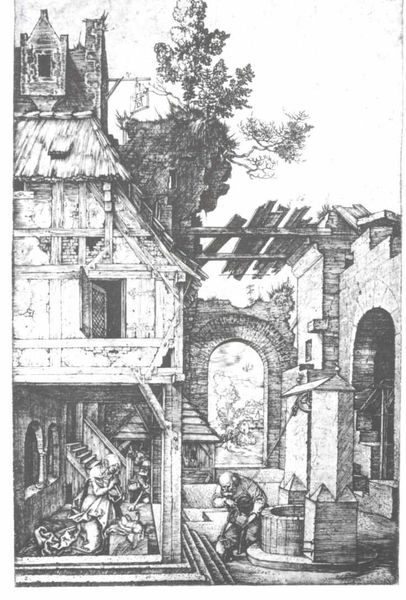
painting, wood
#
dutch-golden-age
#
painting
#
charcoal drawing
#
black and white
#
monochrome photography
#
wood
#
genre-painting
#
monochrome
#
charcoal
#
monochrome
Dimensions: 57 cm (height) x 47 cm (width) (Netto)
Curator: Thomas Wijck created this scene, titled "The Yard of an Italian Tavern," sometime between 1631 and 1677. It’s an oil on wood painting residing here at the SMK, Statens Museum for Kunst. Editor: The monochromatic tones immediately draw you in. The tight composition, almost claustrophobic, adds to the impression of the work capturing a hidden and very real moment in time. Curator: Indeed. Wijck’s interest lies in genre painting, depictions of everyday life. We’re invited to consider the role of the tavern in 17th-century social life and Italian settings. What narratives might unfold in such a place, given its blend of intimacy and commerce? Editor: I'm particularly intrigued by the architecture and arrangement. Notice the way the light streams into the yard and highlights certain details, like the wear and tear on the plaster and stone work or the central colonade element of the Tavern; also note the compositional rhythm in how Wijck balances the architecture with people and animals. It makes you question if it’s merely functional. Curator: Wijck’s choice of this specific tavern becomes telling when considering the social hierarchies in early modern Europe. Taverns offered social mobility in some aspects and how certain individuals and their social settings challenged and redefined community roles and societal dynamics in their local contexts. Editor: The contrast between the busy courtyard and what seems like almost ancient building materials truly makes you wonder about a crossroads between temporal realities in a space and context designed to encourage and foster temporary interactions. I can appreciate how those dichotomies add another later to the narrative as well as elevate this piece. Curator: Yes, the material choices offer interesting questions related to the art market and the social positioning of genre paintings during this period as well. Editor: Absolutely. When you step back, that layering adds meaning to the overall atmosphere that remains visually arresting even today. Curator: Indeed. Wijck gives us much to contemplate about the realities of early modern life and the dynamics of both artistic intention and social reflection. Editor: Well said. And a reminder that formal elements can be as informative as the most detailed historical accounts.
Comments
No comments
Be the first to comment and join the conversation on the ultimate creative platform.
